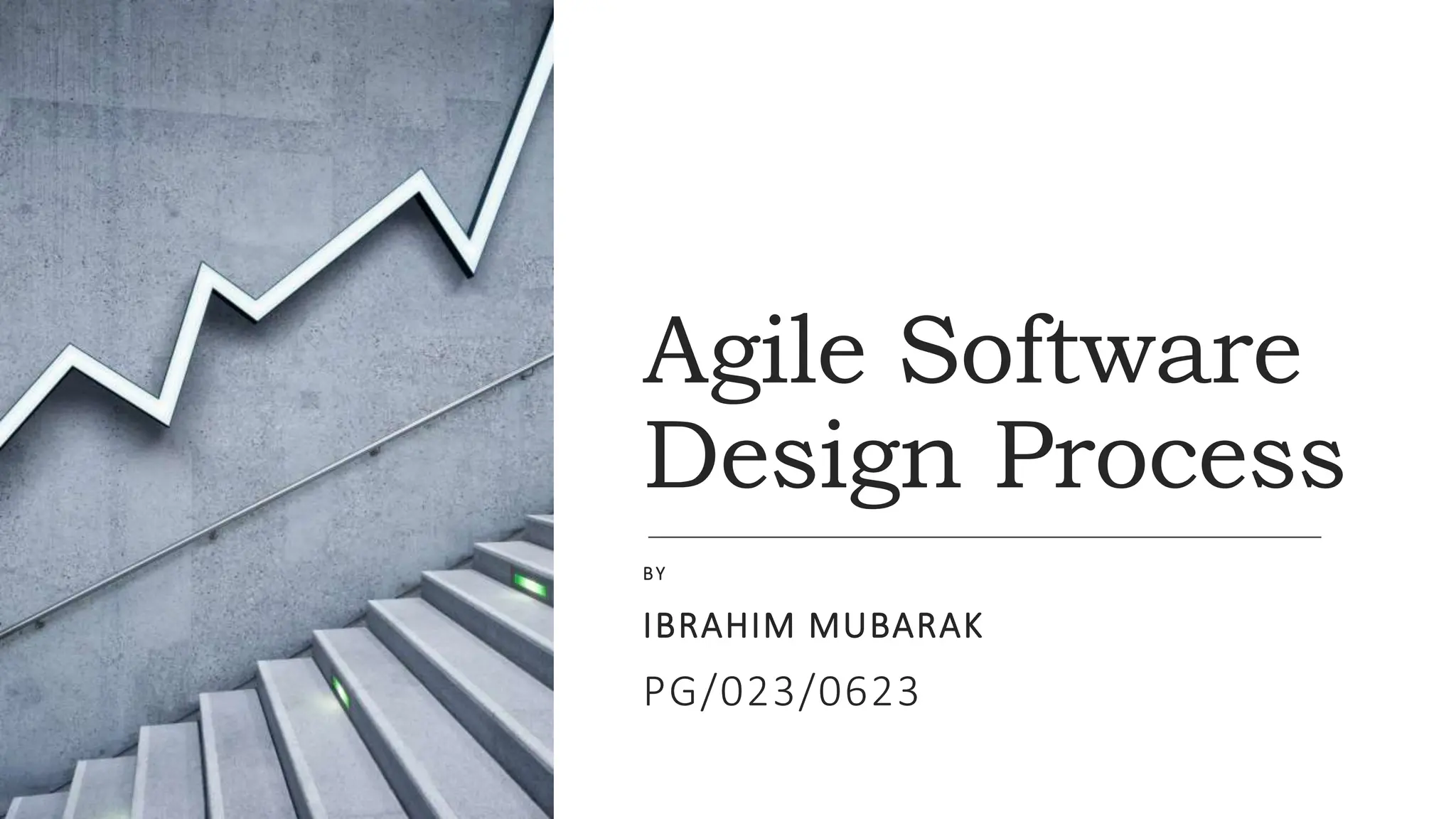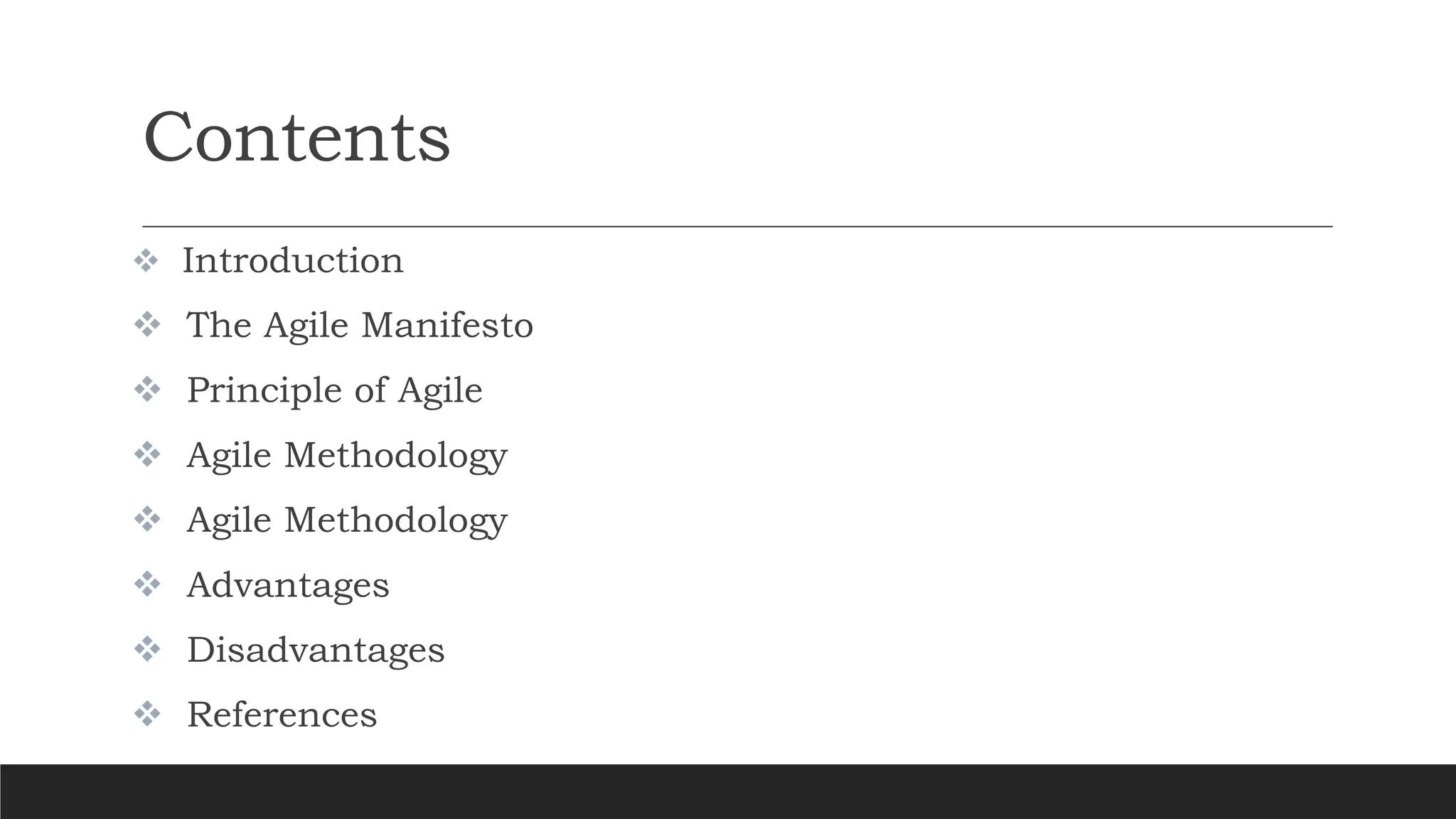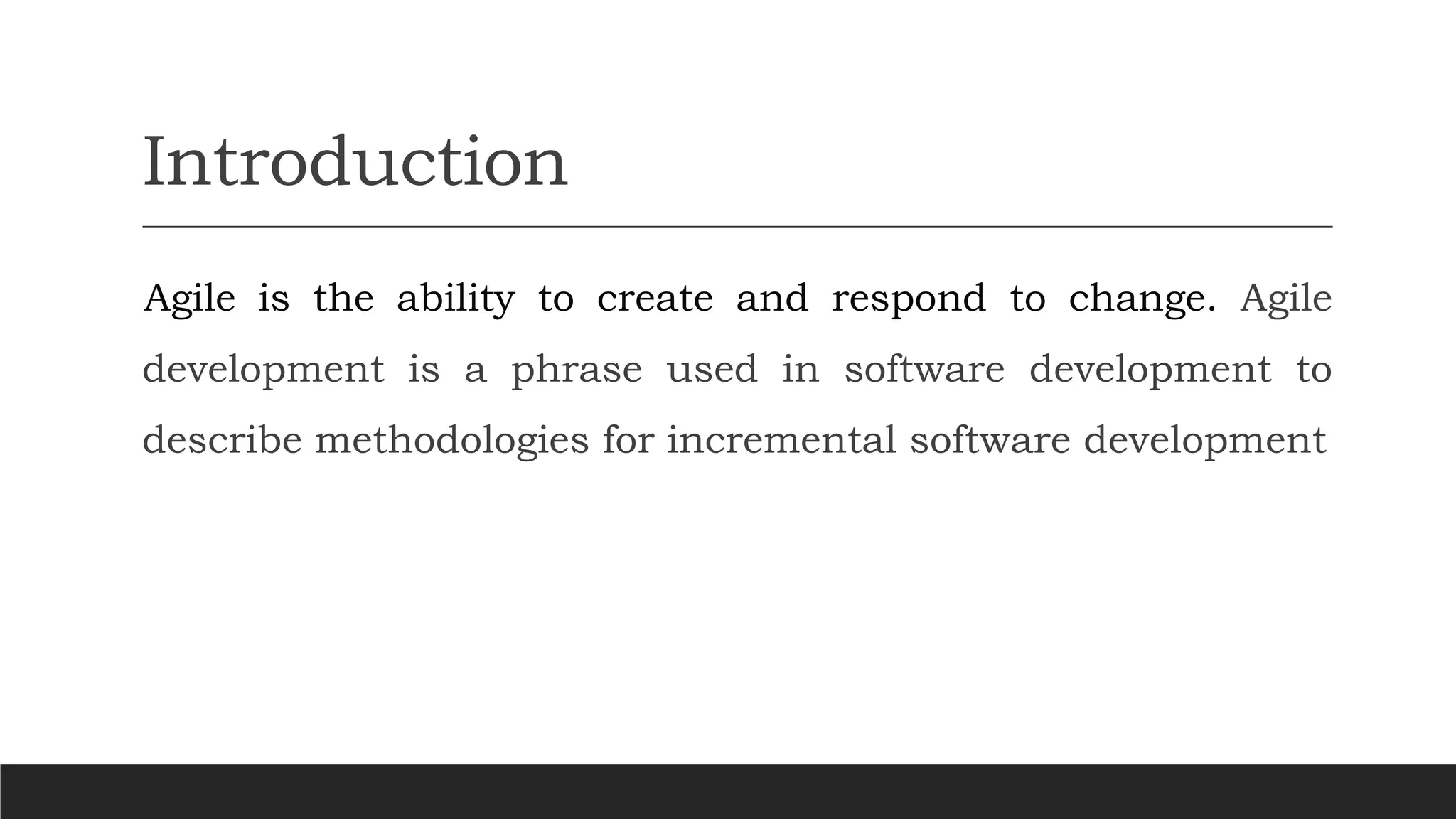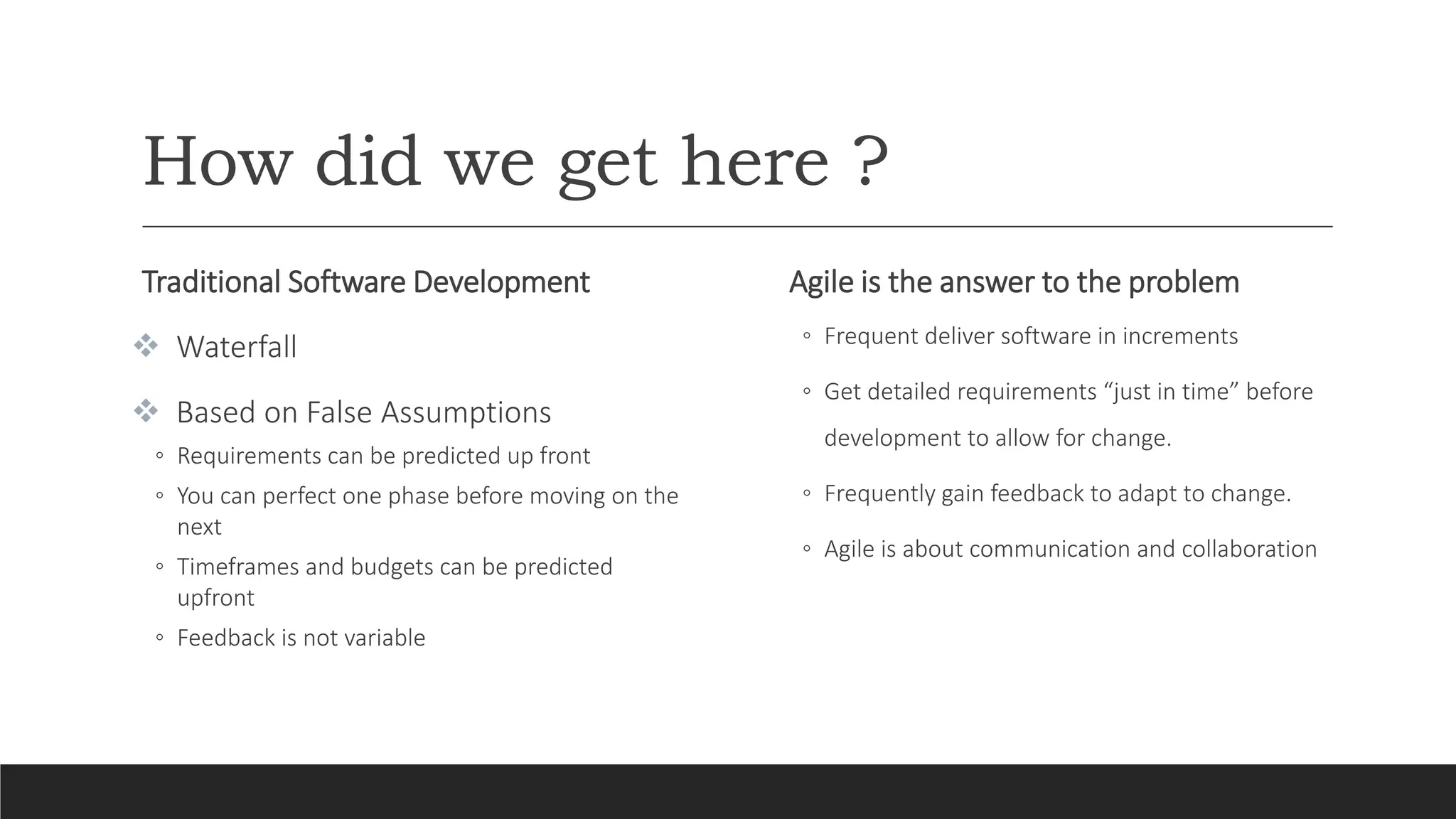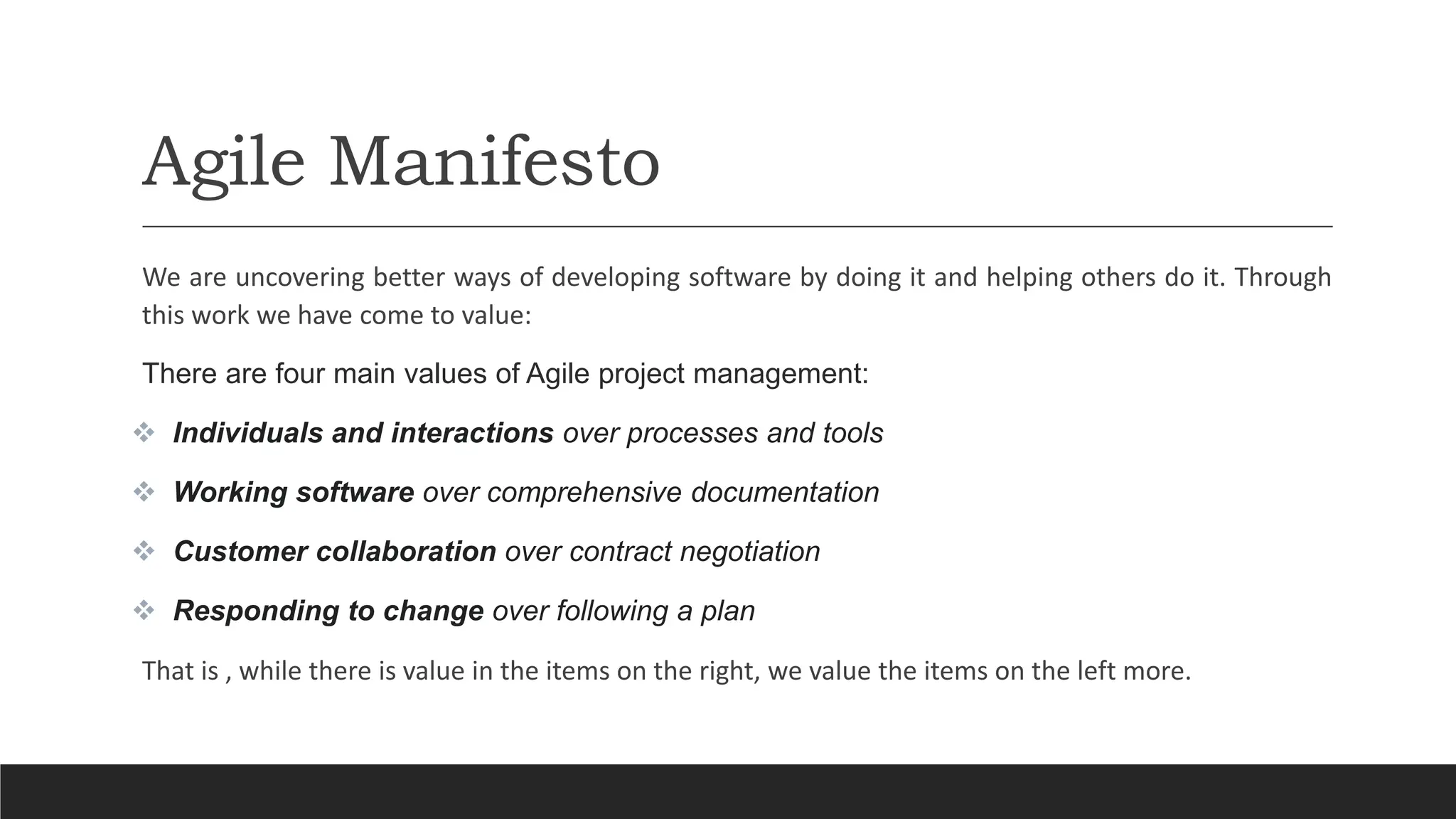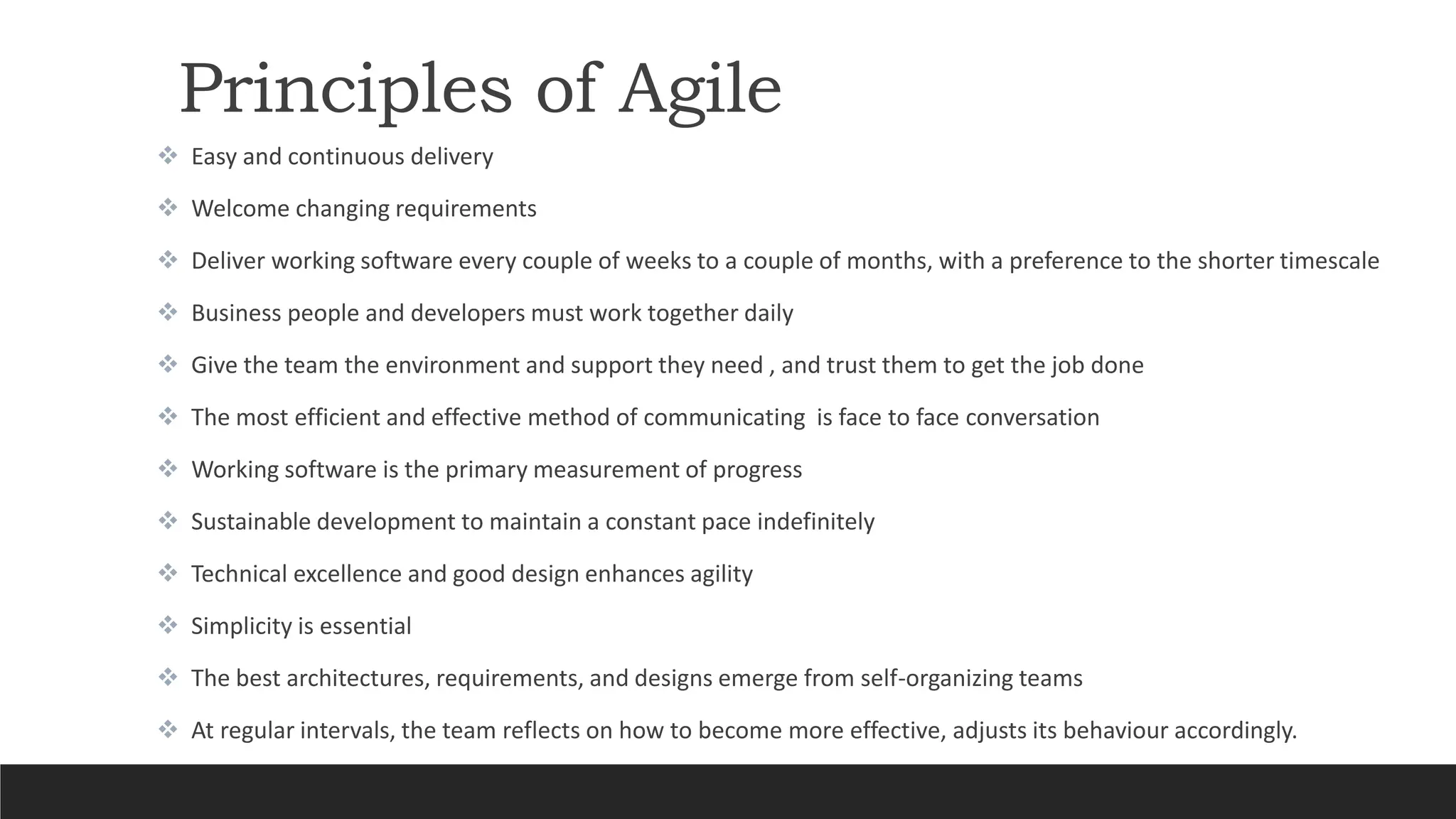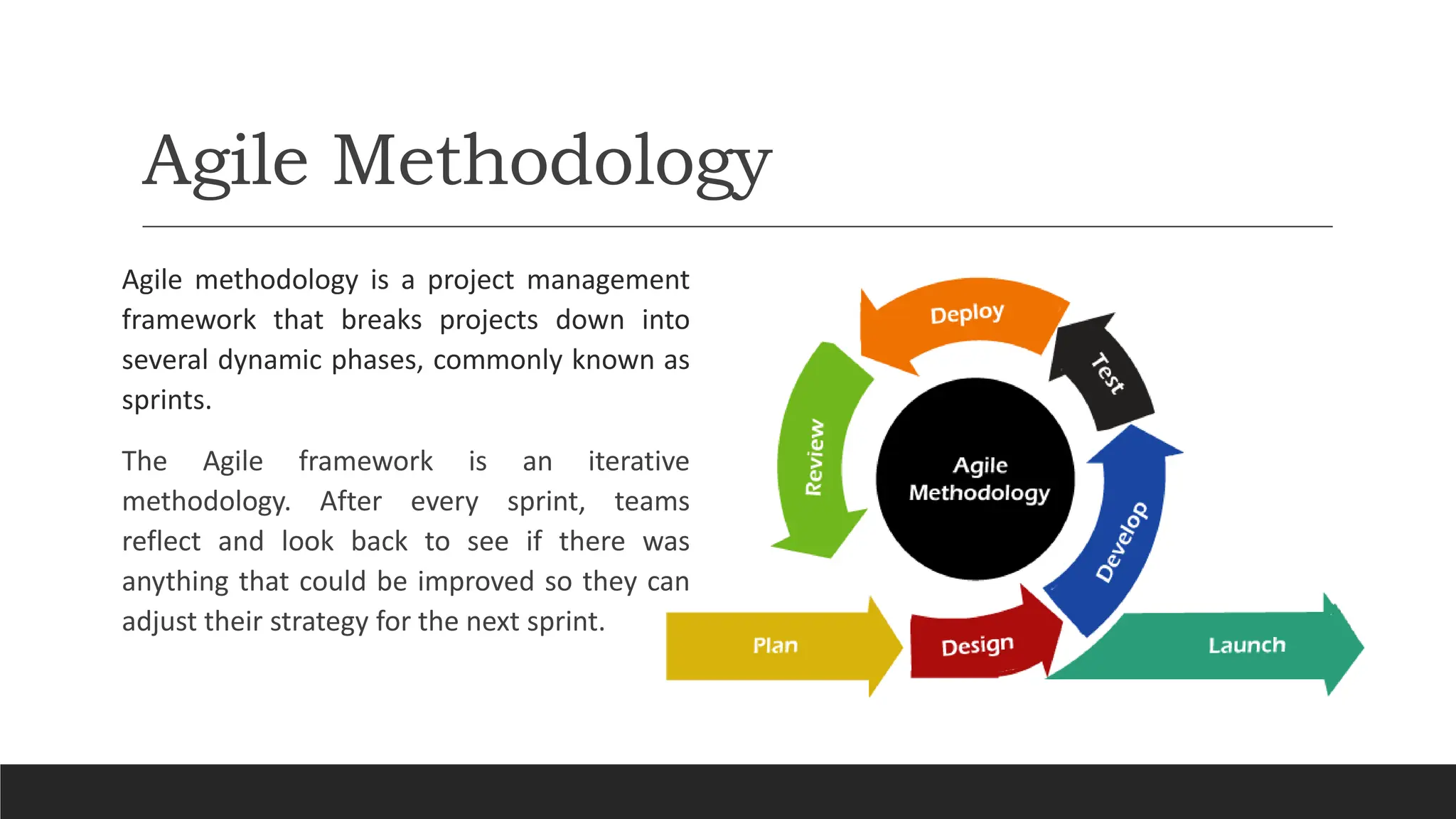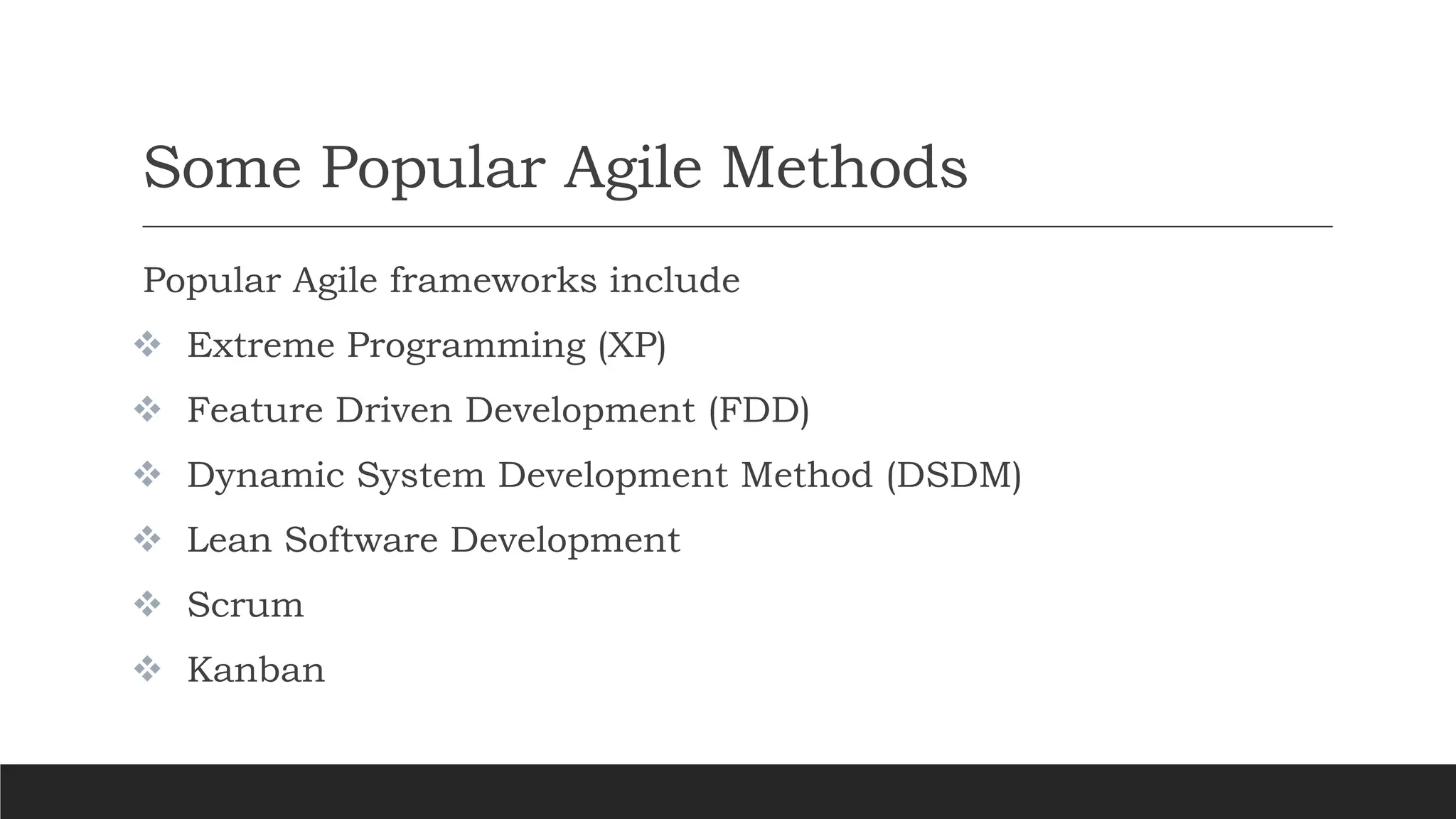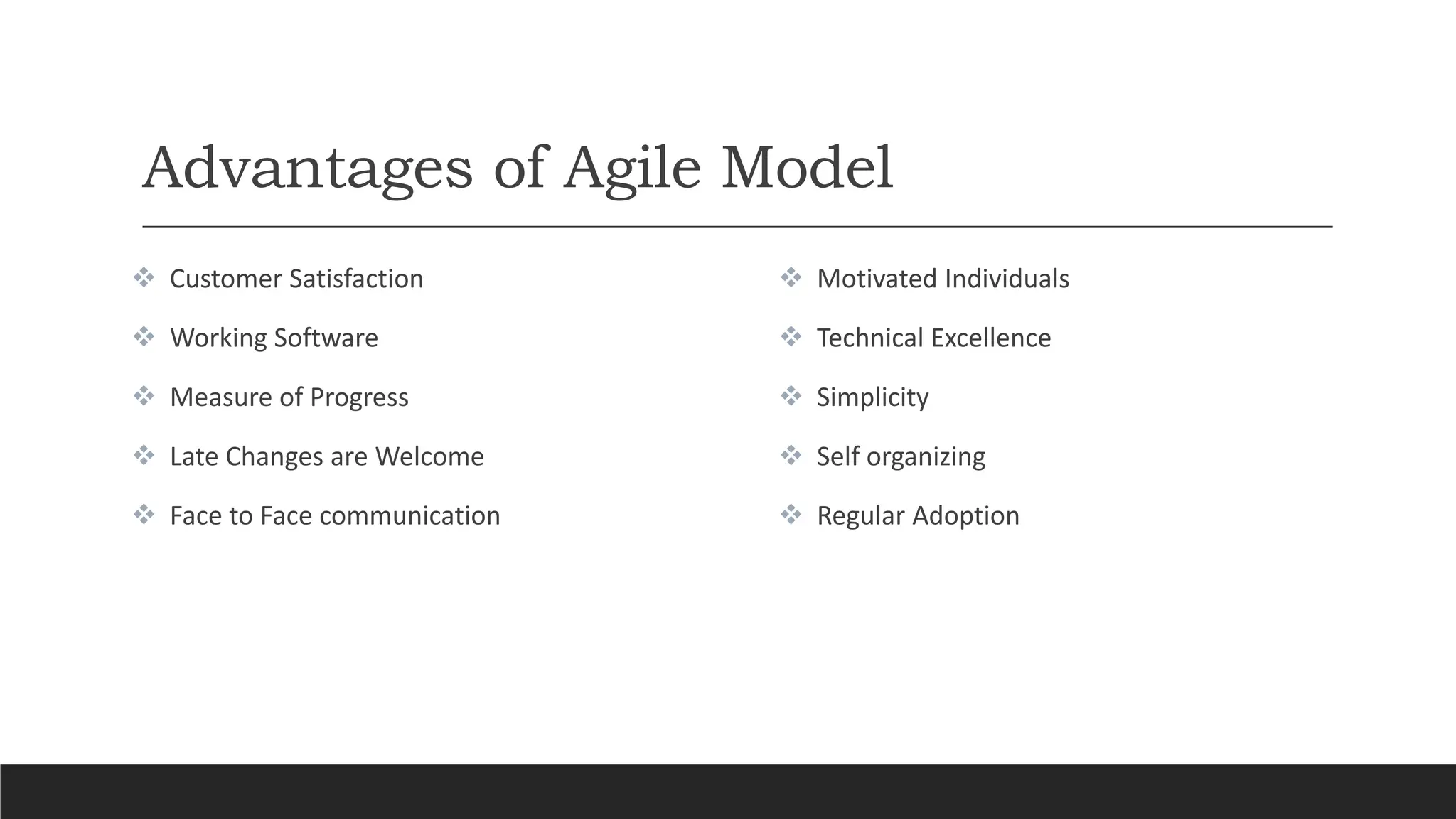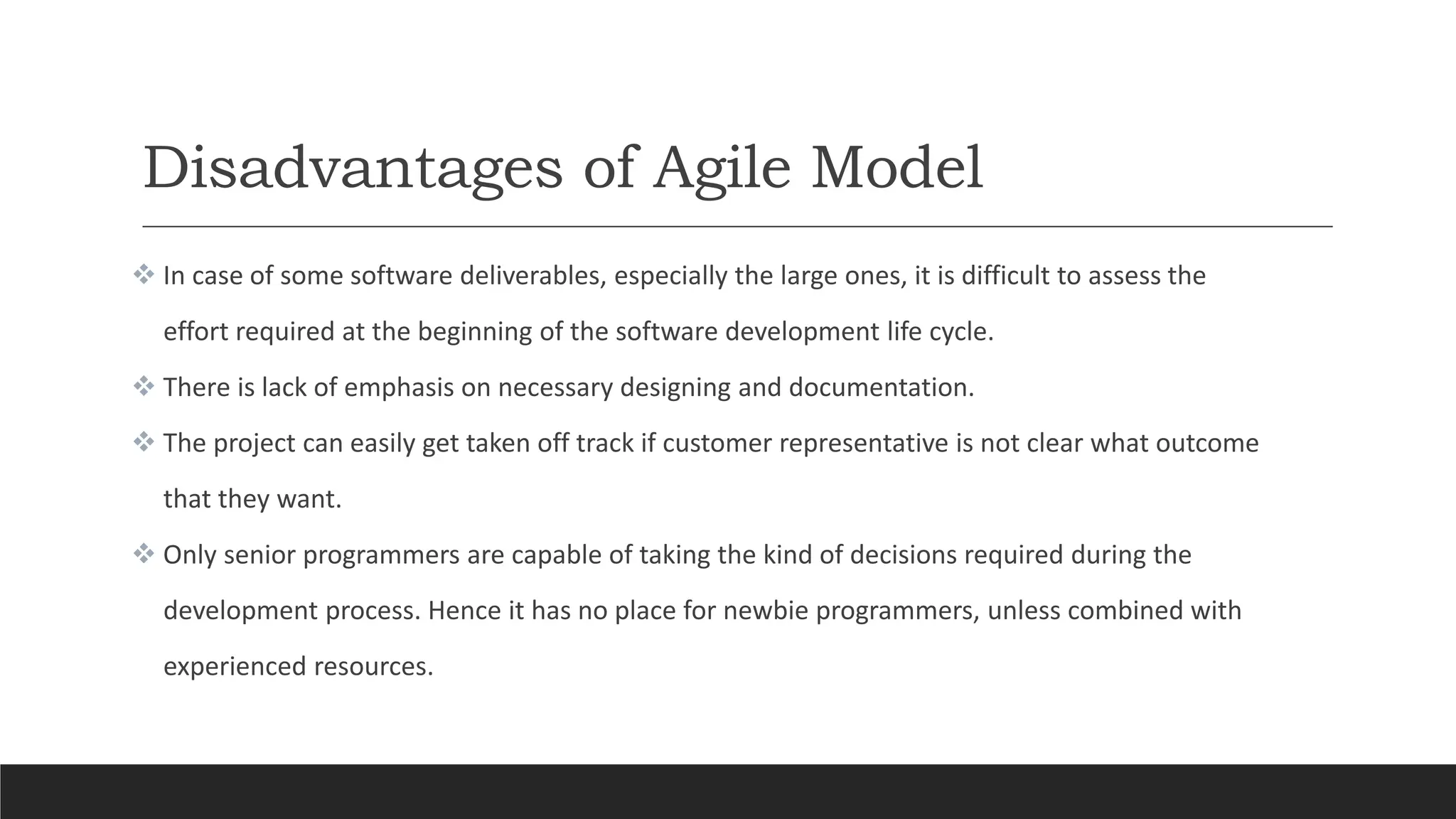The document outlines the agile software design process, presenting it as a response to shortcomings in traditional software development methodologies. It discusses the Agile Manifesto, its principles, methodologies, advantages, and disadvantages, emphasizing flexibility, collaboration, and customer satisfaction. Popular agile methods like Scrum and Kanban are mentioned, highlighting the iterative nature and continuous improvement intrinsic to agile practices.
